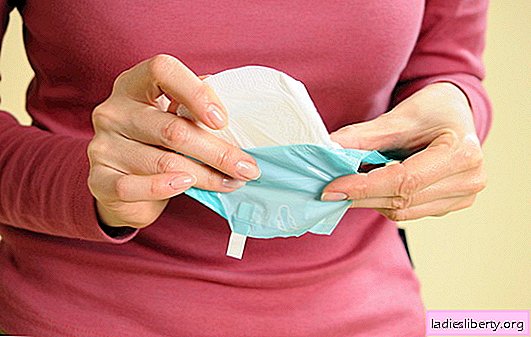
Blood discharge after childbirth is a mandatory and quite normal process.
Thus, lochia and the remains of the placenta are removed from the body.
The norm is considered discharge during the entire postpartum period (approximately 8 weeks).
Blood discharge after childbirth: how much can go normal and what to do if they are plentiful and do not end long?
Is this a cause for concern?
Blood after childbirth: how much is going and why is this happening?
Postpartum discharge is a natural physiological process consisting in the rejection of the uterine mucosa by the body. Allocations go regardless of which way the baby was born (natural or with the help of Caesarean). The birth of a child is the separation of all fruit membranes. The uterus then represents one large bleeding wound.
Recovery of the uterine mucosa begins immediately after the completion of labor. The uterine glands take over this process. In the first days after birth, the discharge consists of blood (80%) and the secretion of the uterine glands. Gradually, the amount of blood in the discharge decreases.
Lochia go in the early and late postpartum periods. The early period is considered in the first two hours after childbirth. The next 6-8 weeks is late.
Blood after childbirth: how much it goes and what the duration depends on
Normally, the duration of postpartum hemorrhage is about 6 weeks. During this time, a woman loses about a half liter of blood. Do not be afraid of such a figure, because the woman’s body is ready for this in advance. When pregnancy occurs, much more blood begins to circulate in the female body than in an ordinary person.
The duration of bloody discharge depends on many factors. Significantly reduces this period of breastfeeding. In the woman’s body, the link between breastfeeding and uterine contraction is initially laid. Accordingly, the faster the uterus comes to its normal state, the faster the discharge will end.
The duration of the discharge is affected by the delivery process. In those women who gave birth naturally, blood after childbirth ends faster. After cesarean section, the uterus is restored a little longer. This is due to the fact that an incision was made on it, which was subsequently sewn up.
Somewhat longer bloody discharge will go in those women who in the postpartum period are subjected to constant stress and heavy physical exertion. This is also why young mothers are advised to have more rest after childbirth and try not to worry.
What other factors affect the duration of discharge from the birth canal:
● multiple pregnancy (the uterus in this case greatly increases in size, which means that the reduction process will be longer);
● impaired blood coagulability;
● trauma during childbirth, internal sutures;
● a large child;
● elements of the placenta that may remain in the birth canal (in this case, the inflammatory process begins);
● contractile characteristic of the uterus;
● the existence of fibroids or fibroids.
Blood after childbirth: how much it goes and what are the rules of personal hygiene during this period
While there is blood discharge, there is a high risk of developing an infectious disease. To avoid this, you must adhere to certain rules of personal hygiene. In the postpartum period, they will slightly differ from the generally accepted and well-known:
● special attention should be paid to sanitary pads, it is better to choose those designed specifically for postpartum discharge;
● when the discharge becomes not so plentiful, you can start using the usual pads for menstruation, but you should be careful when choosing them: they should have a high degree of absorption;
● change gaskets more often; in spite of the fact that it is written on the bundle of the product that they are able to retain moisture for up to 8 hours, it is not worthwhile to advertise, ideally, the gasket should be changed every 3-4 hours;
● tampons for postpartum discharge are strictly forbidden, no matter what you are guided by and which manufacturer you choose;
● it is advisable to wash after each change of gasket;
● this can be done using baby soap, it is also important to monitor the stream of water: it should be directed from front to back;
● if the doctor indicated the need for home treatment of sutures, then this should be done using antiseptics - furatsilina or potassium permanganate;
● it is absolutely contraindicated to take a bath; it is possible to wash and completely wash only in the shower.
Blood discharge after childbirth: how many days can go normal and when to sound the alarm?
Normal postpartum discharge
The first few days after birth, the discharge will be as abundant as possible. Approximately 400 ml of blood should be released daily. Most often, it is not homogeneous, but with mucus or clots. Do not be afraid, this is a completely natural process. It should be so. These days, the discharge goes bright red.
After 3 days, the color will gradually change to brown. The closer to completion the postpartum period (8 weeks), the less discharge will be. Gradually they will look like menstruation, then they will become light and go into ordinary mucus.
When to sound the alarm
If a woman noticed in the hospital that the discharge became more intense or less frequent, thicker or, conversely, more watery, you should immediately tell the doctor about this.
Also, postpartum discharge should be monitored after discharge from the hospital. Despite the fact that the process of recovery after childbirth for each woman takes place individually, there are common points that should become an occasion for contacting a gynecologist.
What should alert each young mother
Quick stop allocation. If Lochia stopped walking earlier than 5 weeks after giving birth, this is a serious cause for concern. Every woman should know that the functional layer of the endometrium is fully restored no earlier than 40 days after delivery. If the discharge stopped very soon after the baby is born, this does not mean the good ability of the body to recover. Most likely this is due to complications. Often they are infectious. However, it may be a cervical spasm. He delays the lochia in its cavity, preventing it from going outside. This situation requires an immediate solution, as it leads to serious consequences.
Red color of secretions. 5 days after the birth, the lochia take their color. Each woman can have it individually. But if the discharge has remained bright red, as in the first days after childbirth, an urgent need to tell the doctor. This may indicate problems such as impaired blood formation or blood clotting.
Lochia color change. If at first the selections changed their color from red to brown, and after some time, they turned red back, this also indicates problems. In most cases, this is due to intrauterine bleeding, which urgently needs to be addressed. A timely visit to a doctor will help to avoid serious consequences. Repeated changes in blood color after childbirth may indicate the existence of a polyp or a rupture of soft tissues in the birth canal.
Odor. If after some time the discharge began to smell (no matter what), this means that an infection has crept into the uterine cavity. It can cause endometritis. By contacting a doctor in time and diagnosing the disease, a young mother can avoid such an unpleasant procedure as curettage. It is carried out when other methods of treatment (taking drugs that suppress the development of microorganisms and forced strengthening of uterine contractions) were ineffective.
Blood discharge after childbirth: how many days can go normal and when do menstruation begin?
Absolutely answer the question: when the menstruation comes, it is impossible. Every female organism is individual. Usually, if the mother has stopped breastfeeding by the end of the postpartum period, she will soon begin to mature the egg.
For those who continued to breastfeed, menstruation can begin six months after birth, not earlier. At first, the cycle will be irregular. Menstruation can be both meager and plentiful, both short (up to 1-2 days), and long (up to 7-8 days). This should not be feared, everything is within the normal range. In some mothers, menstruation does not appear until the end of lactation. This option is also considered the norm. This is due to the postpartum production of the hormone prolactin. It stimulates the production of milk for feeding the baby and helps to suppress the formation of hormones in the ovary (ovulation simply does not occur).
The postpartum period is no less important than pregnancy and childbirth. At this time, you must also carefully consider your health and condition. At the slightest deviation from the norm, it is necessary to visit a doctor. Do not be afraid to talk about all the changes in bleeding that worry you. Even if your gynecologist is a man, remember that he is primarily a doctor who is interested in your speedy recovery from childbirth. If something disturbs you even in the hospital, be sure to consult with him. Many problems are easily solved at the stage of their formation, and not in a neglected form.
After discharge home, do not neglect the rules of personal hygiene and the recommendations of a doctor. Remember, your baby needs a healthy and cheerful mom!











